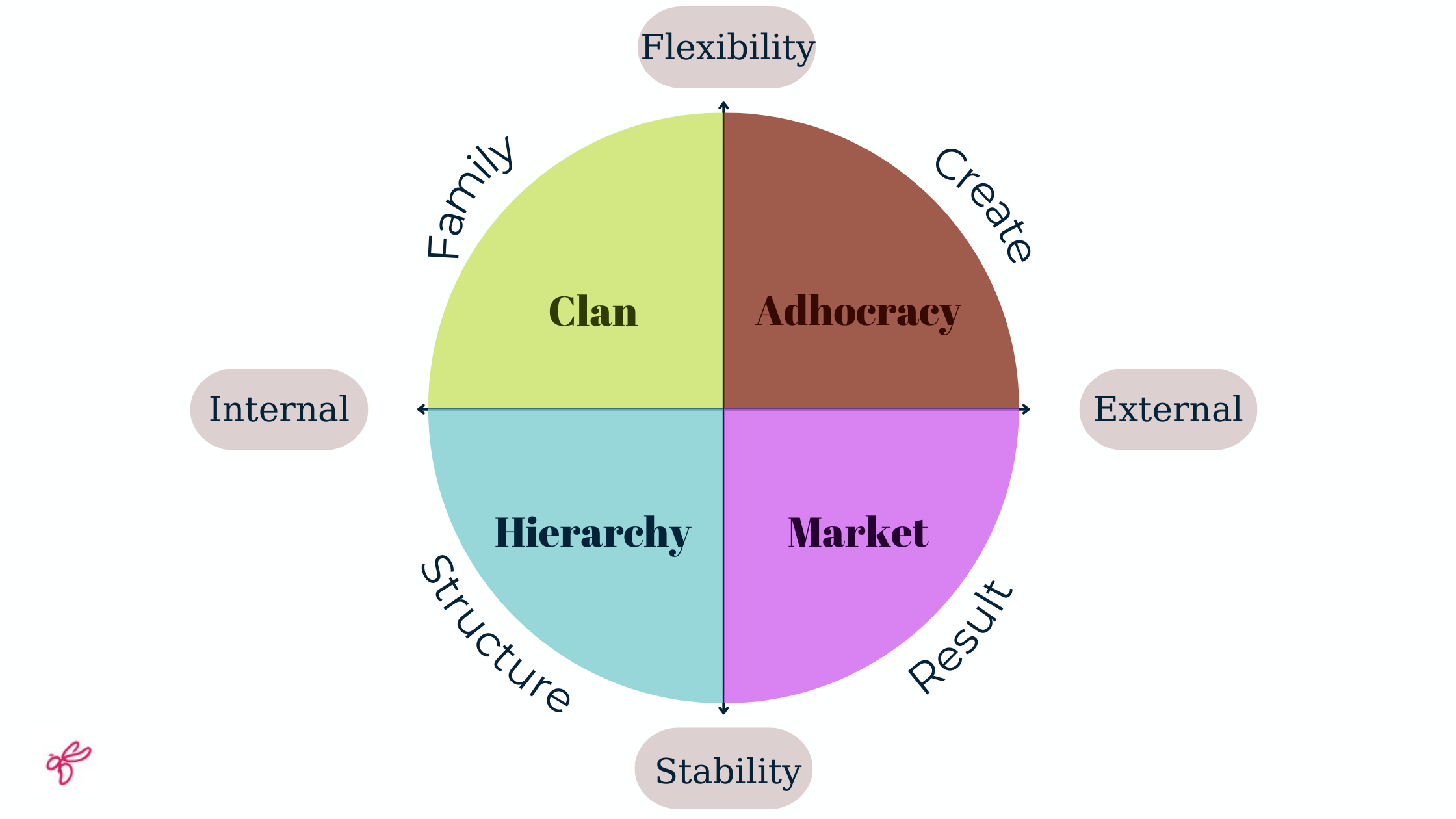Company culture is the whole of an organization’s vision, mission and core values. It increases productivity by supporting better leadership, a peaceful working environment, and talent acquisition. Apart from this, it not only attracts potential talents, but also helps you retain existing qualified employees.
According to Breathe’s 2021 Cultural Economy Report, a negative work culture costs the UK economy £20.2 billion a year. According to the report, almost a third (27%) of employees quit because of company culture. If your company’s productivity is low or qualified employees do not prefer you, this may mean that you need to invest in company culture.
Company culture varies according to the structure of the existing organization. Company culture changes and evolves over time according to the requirements of the organizational structure. For this reason, even though the core values, sector, vision and mission of the companies are the same, the working culture is different from each other. This results in different types of company cultures.

Types of Company Culture
The Competitive Values Framework created by Quinn and Cameron in the 1980s states that every company has a unique culture, but these are basically 4 types of culture. The Competitive Values Framework is also a tool you can use to identify your company culture.
The framework has four components; It includes internal focus and integration and external focus and differentiation, stability and control, and flexibility and discretion. In this article, we will examine the types of company culture using this framework.
According to the Competitive Values Framework, there are four basic types of company culture.
1. Clan Culture
Clan culture is especially common in family businesses and organizations with few employees. Hierarchy is not very dominant, titles are secondary, the important thing is to make the organization successful. The atmosphere is dominated by an atmosphere where everyone feels equal and sincere relations are established. Employees have strong relationships with each other, and their job engagement rates are high. An environment similar to the “family” environment is tried to be created. Leaders are seen as “father” or “mentor”. Leadership becomes mentoring. Collaboration is important.
Positive Aspects: Employees feel “belonging” to the organization. Provides a comfortable environment for feedback and expressing opinions, supports open communication, There is a strong bond between employees.
Negative Aspects: Good relationships and a relaxed atmosphere can be abused, an office environment lacking in authority can cause confusion. The work-leisure balance can be disrupted. Most importantly, as the organization grows, there may be difficulties in executing the operation.
Recommendations: The key to maximizing the benefit of clan culture is communication, control and measurement. In order not to abuse a comfortable working environment and unlimited understanding, communicate openly and indicate to your employees what you do not like or do not want. Too much of anything is harmful, provide a warm working environment where your employees will not feel constrained with measured sincerity. Follow how the operation processes are monitored with auditing, and monitor the performance of your employees with business management software such as PeerBie.
2. Adhocracy Culture
It focuses on four basic components of adhocracy culture: speed, innovation, risk taking and creativity. Businesses with an adhocracy culture encourage their employees to take risks and be creative. Adhocracy, which allows individual initiative and freedom, tries to keep the restrictive factors such as bureaucracy and procedure to a minimum.
It is often seen in start-ups and business leaders are innovative entrepreneurs. It is especially suitable for organizations in the field of technology such as Apple, Google and Facebook, where continuous innovation and improvements are required. However, as the organization grows, it becomes difficult to apply adhocracy in each unit, and in time it begins to be applied only in units that maintain innovation and lead the way in the market.
Positive Aspects: For companies focused only on innovation and being a pioneer in the market, it removes the constraining factors such as bureaucracy, encourages employees, develops them by forcing them to take risks and be creative.
Negative Aspects: Employees may experience some problems in a very busy and fast work environment. A chaotic office environment can tire employees mentally. If they do not understand their responsibilities clearly, disruptions may occur in operations. The company may suffer serious financial losses if problems arise during the implementation of bold plans.
Recommendations: Management is very important in organizations with an adhocratic culture. Plans must be carefully formulated and implemented. It is necessary to ensure the management of the workload of the employees, to determine and assign the tasks clearly, and to have continuous communication. Investing in business management software such as PeerBie by companies with an adhocratic culture both relieves the burden of employees and ensures that operational processes run flawlessly.
3. Market Culture
The main goals of the market culture, which started to become widespread in the 1960s, is to always be at the forefront of the race. Organizations with a market culture are focused on tangible results, and there is incredible competition both in the market and among employees. In the market culture of companies such as Oracle, Tesla, and Amazon, the main motivation is to do what no one else has done and put them on the market before anyone else, and to increase the profit rates as much as possible. Customer satisfaction is very important. The entire organization is positioned around the goal of beating competitors. Leaders are very demanding and demanding.
Positive Aspects: Result orientation brings success. One of the characteristic features of market culture is meritocracy. It has a business approach based on merit.
Negative Aspects: Excessive competition can disengage employees and teamwork can bring failure. Since customer satisfaction is in the first place in the market culture, employee satisfaction and experience may be second or even third. Not giving importance to employee’s job satisfaction, excessive competition, constant innovation and success pressure can cause employee burnout.
Recommendations: Emphasis should be placed on areas such as employee satisfaction and satisfaction, strengthening inter-employee relations, and workload management should be properly planned for employee health. With project management tools, the management of the process can be more comfortable. You can listen to your employees with the uninterrupted communication offered by PeerBie.
4. Hierarchy Culture
The most characteristic feature of the hierarchical culture, the most traditional workplace culture, comes from its name. Organizations with this culture have a hierarchical chain of command and all employees know very well where they are in this chain. Organizational structure, control and “doing things right” are among the most important features. Not making mistakes is one of the biggest goals. There is strict adherence to bureaucracy and procedures. There are strict follow-up and strict rules. Relationships are pretty formal. There are layers and distances between the leader and the employee. Duties are clear and responsibilities are assigned according to job level. It is suitable for the administration of large organizations such as army, hospital, oil enterprises.
Positive Aspects: Provides risk management, stability and efficiency. Makes it easy to be organized. Boundaries and tasks are very clearly defined, there is no room for obscurity. Communication is flawless. Everything is done by the book.
Negative Aspects: Not flexible; affected by sudden changes. Strict rules and bureaucracy slow down the process.
Recommendations: Filling gaps in the chain of command and setting goals for each department makes it easier to run things.
What Is the Best Company Culture?
Quinn and Cameron, who developed the Competitive Values Framework, answered the question of what the best company culture is. Quinn and Cameron found that resilient organizations are more successful than rigid ones because the best organizations are comfortable managing cross-cultural conflict, using each of the four value sets wisely as needed.
PeerBie and Company Cultures
PeerBie, a business management software, provides services in areas such as performance management, uninterrupted communication, teamwork, task management, and facilitates the implementation of company culture.
With the performance management feature, you can track how the culture affects your employees, communicate with them through messages, surveys or posts and find out what they think, and with the task management feature, you can distribute the workload on the basis of the employee and manage what needs to be done.



